Structured Alpaca Cowl in Purl Soho’s New Alpaca Pure!
Purl Soho’s newest yarn, Alpaca Pure, is wonderfully suited for contrasts and warmth! This elegantly plied yarn is as articulate in a textured rib as it is in smooth stockinette stitch. And in 100% of the softest and coziest alpaca fiber we’ve ever felt, this worsted weight yarn creates the very fabric you dream about in the bitterest depths of winter.
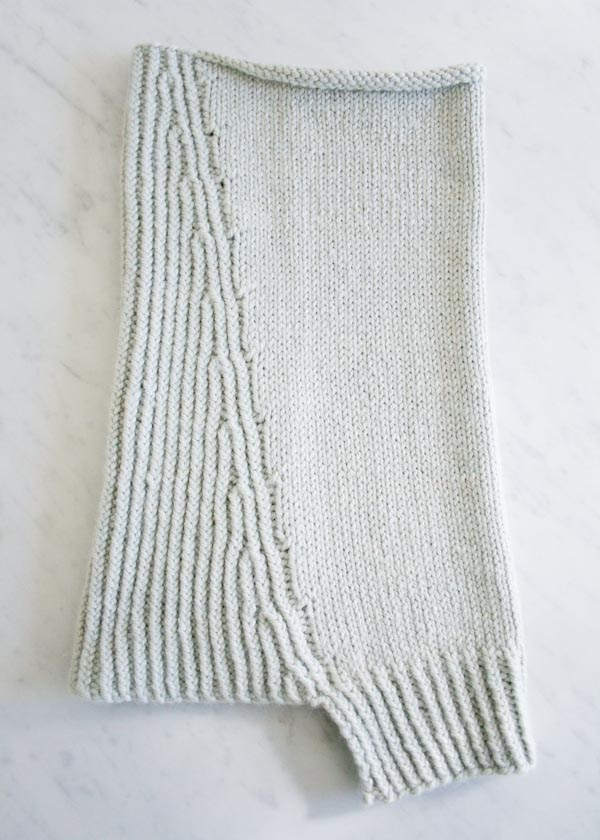
Our Structured Alpaca Cowl was inspired by the versatility of Alpaca Pure, its subtle sheen and sumptuous loft. A twisted rib pattern stands tall to protect the back of the neck, while a stockinette front gently drapes below the chin, framing the wearer’s face and fortifying against the cold. Quick and simple to knit, gorgeous to wear, it’s the ultimate last minute gift!
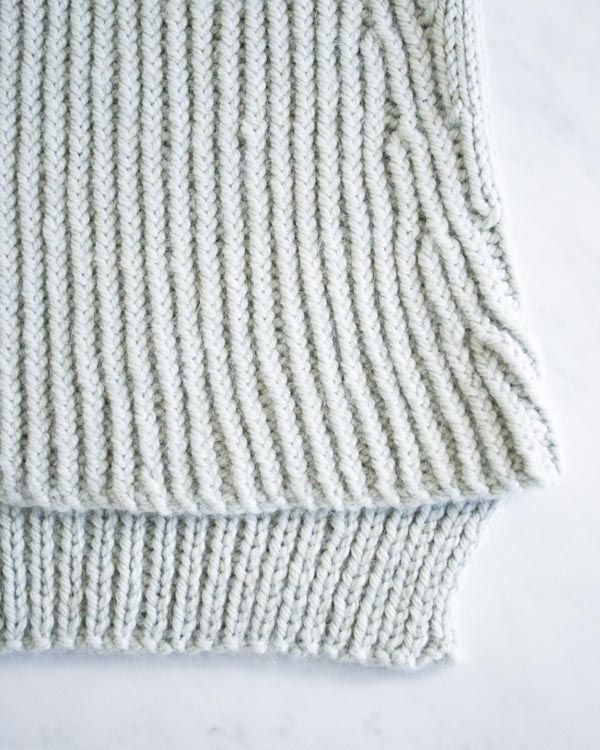
Our Alpaca Pure collection comes in our classic palette of neutrals and blues with pops of our favorite wildflower brights. Enjoy this quick-knitting beauty, so perfect for holiday crafting and giving! -Laura
Designed by Purl Soho designer, Laura Ferguson.
Share your progress and connect with the community by tagging your pics with #PurlSoho, #PurlSohoBusyHands, and #PurlSohoStructuredAlpacaCowl. We can’t wait to see what you make!
Materials
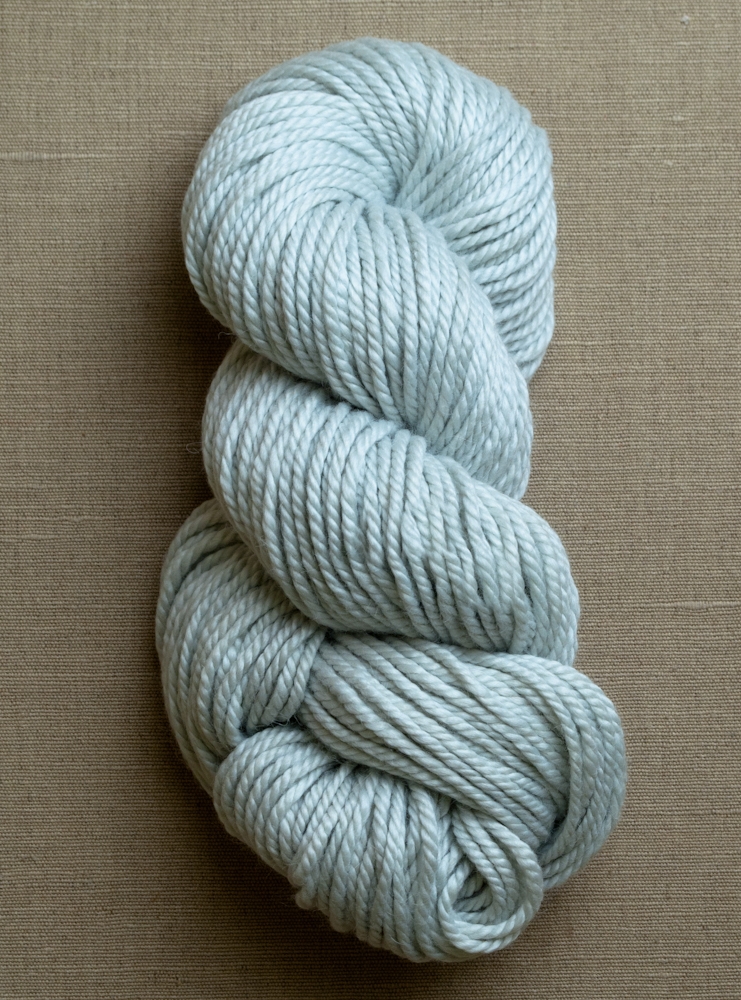
- 2 skeins of Purl Soho’s Alpaca Pure, 100% alpaca. Approximately 223 yards required. We used the color Artemisia. (NOTE: We no longer offer Alpaca Pure, but choose from one of our other worsted weight yarns.)
- US 7 (4.5 mm), 16-inch circular needles
- Stitch markers
Gauge
18 stitches = 4 inches in stockinette stitch
Size
Finished Circumference at top: 17 inches
Finished Circumference at bottom: 21 inches
Finished Height: 18 inches
Notes
sssk [slip slip slip knit]: Slip three stitches purlwise one at a time, insert left needle into front of three slipped stitches, knit together.
k3tog [knit 3 together]: Insert right needle into the next three stitches, knit together.
Pattern
Begin with Front Ribbed Flap
Cast on 47 stitches. We used a basic Long Tail Cast On.
Row 1 (wrong side): (P1 tbl, k1) to last stitch, p1 tbl.
Row 2: (K1 tbl, p1) to last stitch, k1 tbl.
Repeat Rows 1 and 2 until piece measures 3 inches.
Repeat Row 1.
Prepare to Work in the Round
Next Row (right side): (K1 tbl, p1) two times, place marker (pm), k39, pm, (p1, k1 tbl) two times, turn work and with wrong side facing, cable cast on 59 stitches. [106 stitches]
Turn work and with right side facing, join for working in the round being careful to not twist the stitches.
(K1 tbl, p1) two times.
NOTE: From this point forward, treat the first marker as the beginning-of-round marker.
Work the Cowl
Round 1: Knit to next marker, (p1, k1 tbl) to last stitch, p1.
Rounds 2 and 3: Repeat Round 1.
Round 4 (Decrease Round): Make 1 left (m1L), knit to next marker, make 1 right (m1R), slip marker, p1, k1 tbl, p1, sssk (see Pattern Notes, above), (p1, k1 tbl) to last 6 stitches, k3tog (see Pattern Notes, above), p1, k1 tbl, p1. (2 stitches decreased)
Rounds 5-8: Repeat Round 1.
Repeat Rounds 1-8 ten more times. [84 stitches]
Finish
Bind off loosely in pattern.
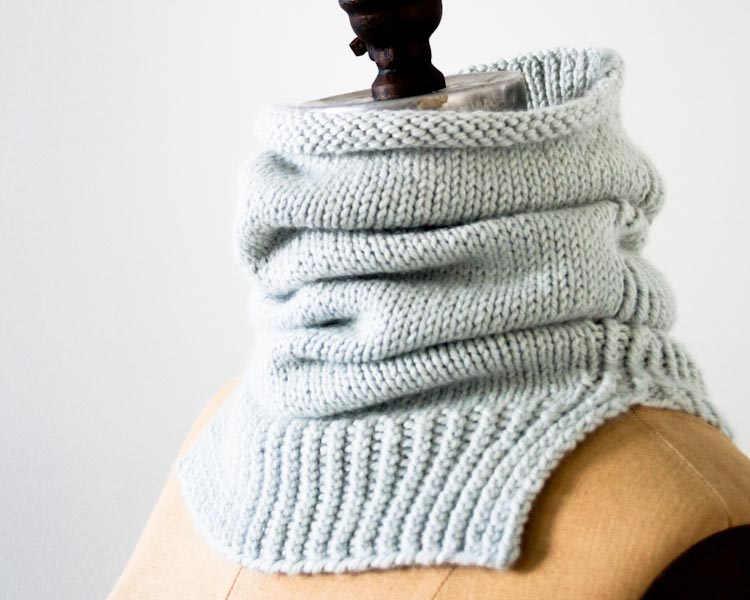


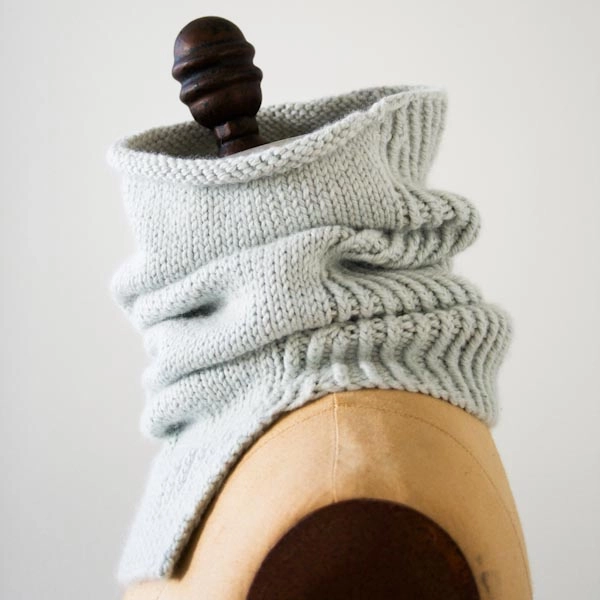
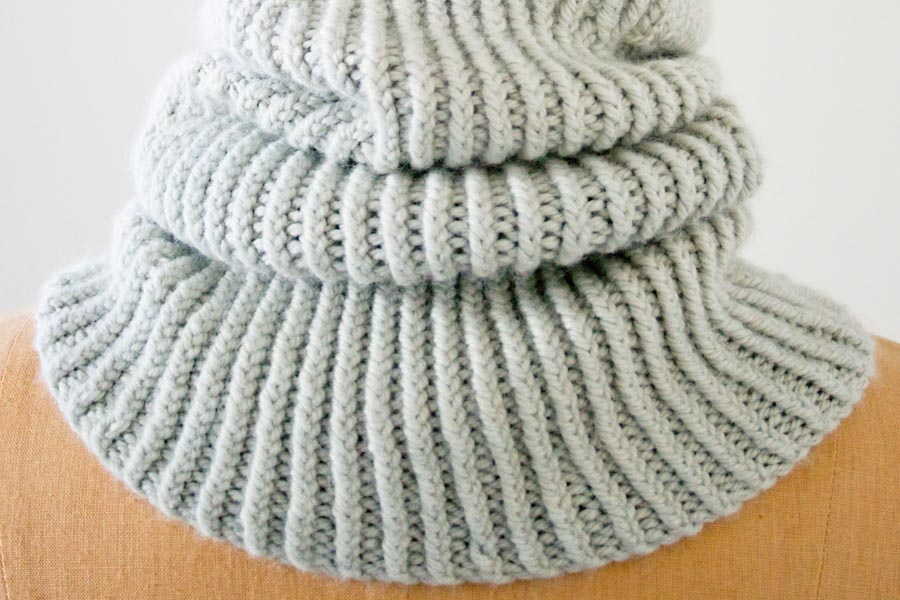
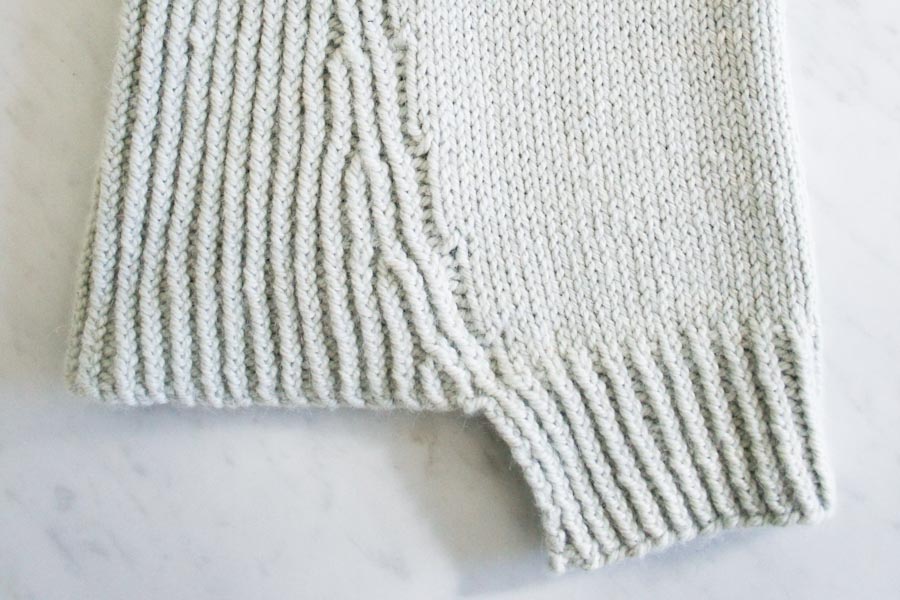

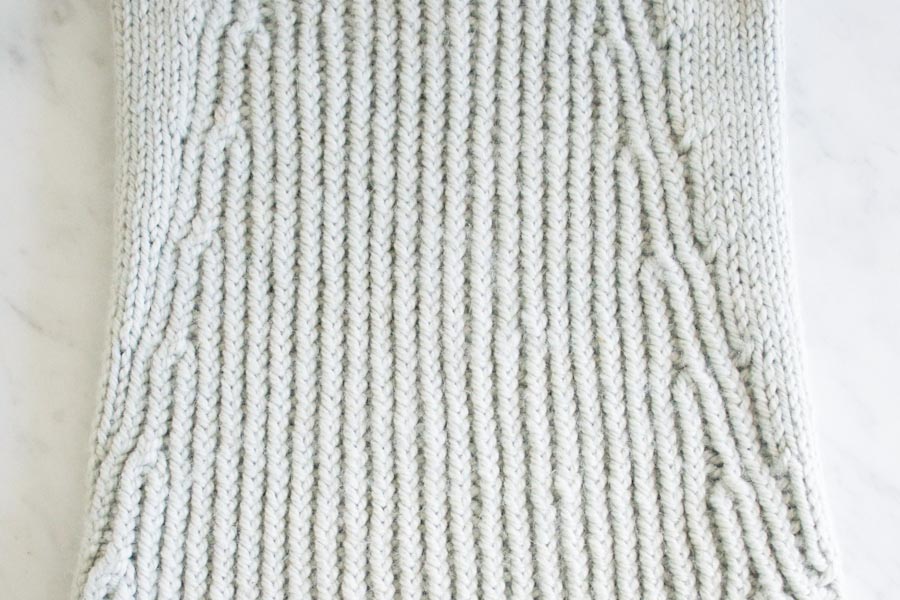
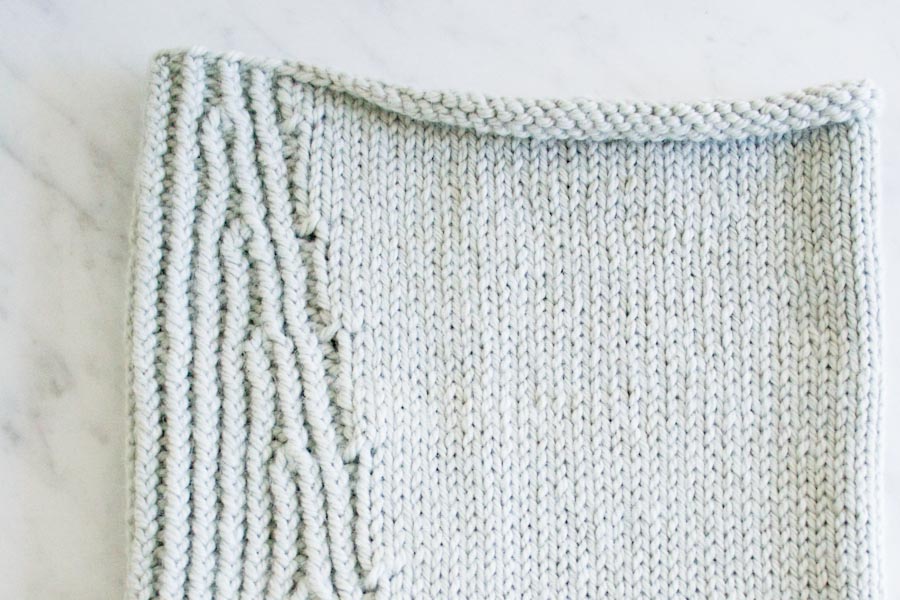


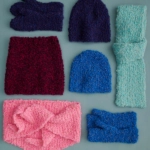
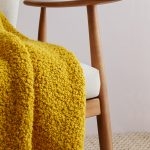
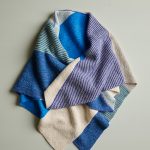
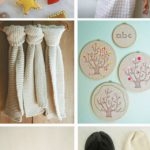
I would love to make this cowl! Do you think it is possible in Understory yarn (preferably), or season alpaca? With either, how should I change the pattern??
Hi Lucinda,
Thanks for reaching out! Understory has a fairly similar gauge to Alpaca Pure, so I think it could work. However, Season Alpaca is sportweight, so I think that it’s far too light a weight for this project! I actually want to suggest Worsted Twist as a good substitute for Alpaca Pure, since it’s also a worsted weight yarn, and it has a similar structure.
As always, we recommend making a gauge swatch before starting a project to be sure you’re working with the right needles, especially when substituting yarns. If this is daunting, I’d recommend checking out a tutorial called All About Gauge, which covers some incredibly helpful information!
Hope this helps!
All the best,
Lili
Hi,
Would this pattern work with cashmere merino bloom?
Thank you.
Hi Debra,
Thanks for writing in. I don’t think that Cashmere Merino Bloom would be a great substitute for Alpaca Pure, since it’s a DK weight yarn, while Alpaca Pure was worsted weight. Instead, I’d recommend taking a look through the worsted/aran weight yarns we carry to find a good substitute, in terms of weight! Hope this helps.
All the best,
Lili
Thanks, lili. I’ll do that!
Debra
Hi, from your listed materials it’s not entirely clear. Can I make this with 218 yards of any sport/dk weight yarn, or because I’ll need two skeins of the alpaca pure, do I actually need 436 yards?
Hi Laura,
Thanks for writing in! That is a great question, our Alpaca Pure had 109 yards per skein and the cowl uses approximately 218 yards, so you will just need 218 yards to complete the cowl. In place of Alpaca Pure, I would suggest using our lovely Plenty! It is a close gauge match so it would be a great option for this cowl, each skein is 139 yards, so you will want 2 skeins.
I hope this helps!
Gianna
Hello,
I’m a new knitter and am a little confused with the gauge directions. I looked at your All About Gauge page and couldn’t find an answer. You say this gauge is 18 stitches. How many rows do I knit?
Thanks!
Eva
Hi Eva!
Thanks for your great question! You are correct in that you should be getting 18 stitches per 4 inches horizontally, while also knitting enough rows to reach 4 inches vertically. Most of our older patterns did not include a row gauge measurement, but after doing some calculations, we estimated that working about 24 rows would reach the 4” gauge mark. For this specific pattern, I would cast on at least 24 stitches and knit at least 30 rows, in order to knit a slightly larger than 4” square from which to assess your gauge. It’s recommended that a gauge swatch is slightly larger than the area you need to measure, to account for the rolled edges of stockinette stitch, and just to make it easier to take an accurate measurement!
Additionally, because this pattern is knit in the round, it might benefit you to knit your gauge swatch in the round, which we have a tutorial for here.
I hope this helps you!
All the best,
Margaret
Somewhere on your website I thought you suggested buying Super Soft Merino for the Structured Alpaca Cowl. I bought the yarn and it’s Super Bulky so I must have misread. So now I need a yarn better suited to the Cowl as well as what I can knit from Super Bulky single spun Merino. Thanks
Hi Bette,
Thanks for reaching out. The Structured Alpaca Cowl was originally designed for Alpaca Pure, which was a worsted weight yarn. Since that yarn has since been discontinued, I’d recommend using Worsted Twist instead!
As for a use for the Super Soft Merino you already have, we happen to have designed many patterns using that yarn! I’d recommend browsing through those at this link. Hope this helps!
All the best,
Lili
I see my problem was mixing up Structured Alpaca Cowl with Quick and Cozy Cowl. Not paying attention I guess. Thanks for your help.
I have a question about the decreases on this cowl. I am on the first decrease on row four. Then the pattern says to work rows five through eight. Next repeat rows one through eight. Does this mean that you decrease again on the next row 4, which would make eight rows between each decrease row?
I have knitted this pattern before several years ago, but I don’t remember exactly the number of rows between decreases. It is for my godson who works in a cattle feed yard in Lubbock, Texas where it is really windy and cold during winter. I have knitted him several cowls, but this is his favorite because he can tuck it into the front of his jacket. You all should consider promoting it for people who work outside in the winter. It would be a great seller.
Hi Clare,
Yes, you’ll always be decreasing only on each repeat of Round 4! That way, the decreases end up being 8 rounds apart from each other (7 rounds in between each decrease round). And I’m so glad to hear that the design of this cowl is perfect for your godson!
All the best,
Lili
Than you
Hi there! Love this pattern. I added 10 stitches to the cable cast on to give me a bit more room… would I need to do the decreases differently ? If so.. what do you suggest?
Thanks!
Hi Jennifer,
As long as you keep the stitch markers in the same places as they are in the original pattern, you will not need to change the location of the decreases (or increases) at all! The ribbed section in the back of the cowl will just be slightly wider at all points.
All the best,
Lili
Hi There!
Thank you so much for this beautiful pattern. I cannot figure out why but on one edge of the “bib” my edge is so messy and loose looking? The other edge looks lovely and straight. Should I add (2) extra stitches during cast on to slip one on each end for a cleaner edge?
Thank you so much!
Hi Alyssa,
Thank you for writing in! You can definitely add two stitches for a nice clean selvage edge!
Happy knitting,
Gavriella
Hi There! Is there a way that the decrease slant that is on the wrong side ( or inside ) of the cowl could be on the outside?
Thank you!
Hi Alyssa,
We haven’t given this a try yet but you can definitely swatch to see how you like the result of the fabric. I’d do this by casting on just a small section and seeing how you like the way it works up.